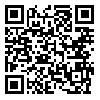BibTeX | RIS | EndNote | Medlars | ProCite | Reference Manager | RefWorks
Send citation to:
URL: http://jhsw.tums.ac.ir/article-1-5066-en.html
2- Occupational Health, Tehran University of Medical Sciences, Tehran, Iran. Occupational health research center.
Introduction: Following the presentation of Domino model by Heinrich in 1931 this idea was formed that human is the most important cause of accidents. According to Heinrich, unsafe behavior (88%), unsafe condition (10%) and unexpected factors (2%) are involved in accidents causation. Thus, the aim of this study was to investigates workers safety, culture and its influencing factors in detergent and cleaner company.
.
Material and Method: In order to determine the level of safety culture in the understudy detergent producing company a questioner developed in 2010 was used. It was included dimensions of management commitment, training and information exchange, protective environment, inhibitory factors and priority to safety. After collecting the questionnaires, data were analyzed using SPSS version 17.
.
Result: The mean age of the participants of 37.5 years old and the mean work experience 13.7 years. 52.3 % of workers had not experienced any accident during their working year. Moreover, mean (SD) score of safety culture was 180.51 (±35.216).
.
Conclusion: The difference of safety culture score were statistically different among occupational groups and also between workers with and without accidents.
Received: 2013/12/10 | Accepted: 2013/12/10 | Published: 2013/12/10
| Rights and permissions | |
 |
This work is licensed under a Creative Commons Attribution-NonCommercial 4.0 International License. |





